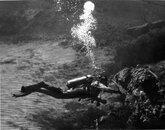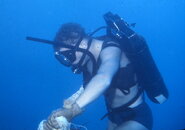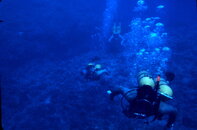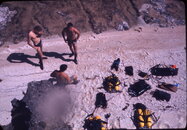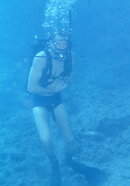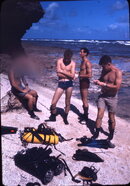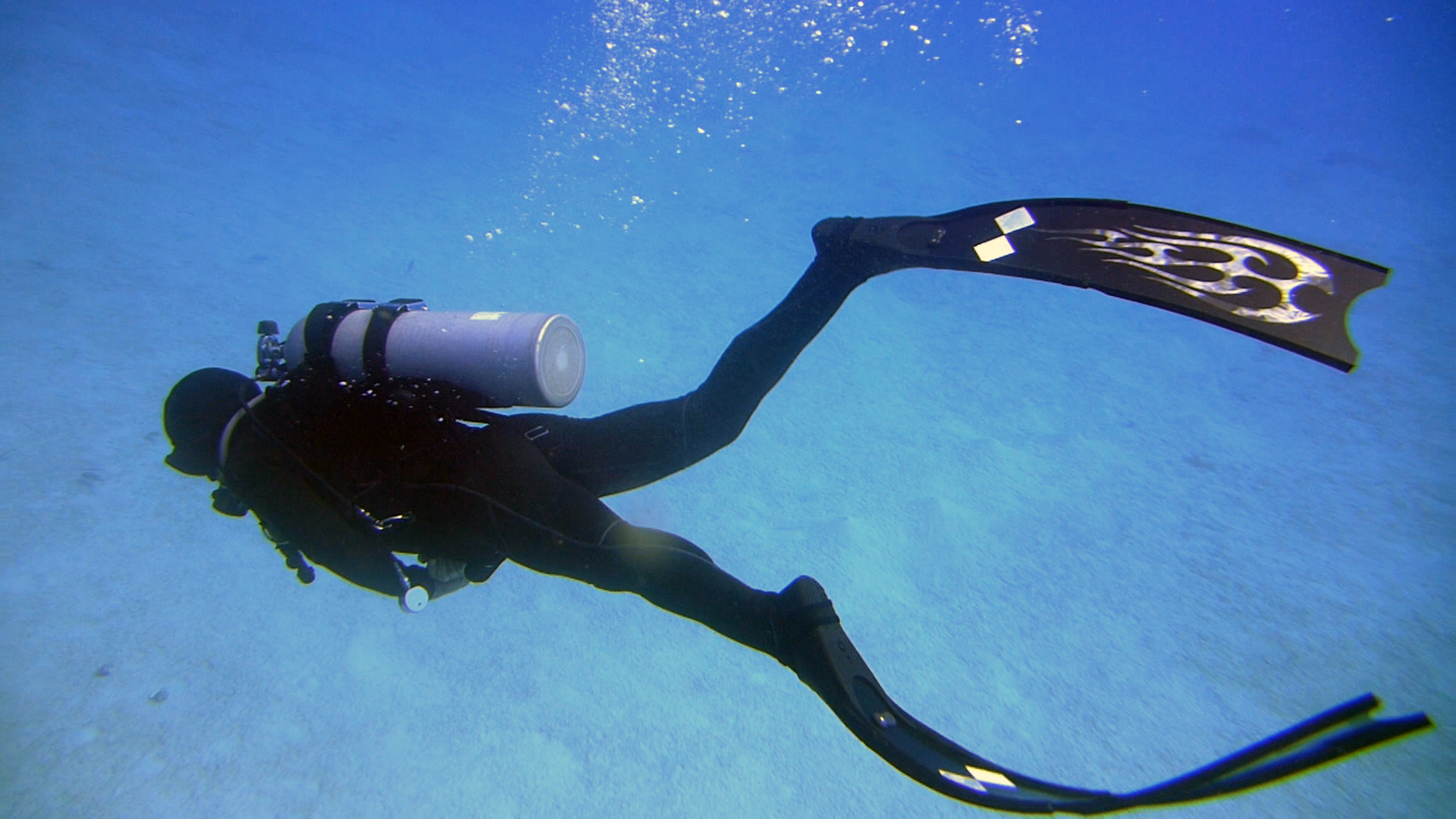I think where this thread ended up is to try and make a point that scuba in general to many people has become way to mechanical and gear reliant way beyond what is necessary. Yeah scuba will always be mechanical in the sense of the tank, regulator, hoses, etc., that is the inevitable mechanical component and always will be, but the rest has incrementally crept in to become what is known today as "mandatory equipment", and to the minimalists this is simply not true.
I'll bet almost 100% of new open water students have no idea of anything beyond what the training facility outfits them in to do their dive training. This would include a modern BCD that is generally very large and cumersome and way over padded, a large amount of weight placed into the integrated pockets of the BC, hoses sticking out everywhere that can cause drag and also catch on things, large consoles that are difficult to stow in a fashion that keeps them close to the body, fins that may or may not be optimal high propulsion efficient designs, ankle weights, a lot of times a very large snorkel that is mandated by some agencies, and in cold water I see poor tank material choices such as using AL tanks since they require more lead to sink making the diver really heavy out of the water.
These students may never realize that there is a much simpler and more streamlined way to dive without half that crap. It's actually safer and more enjoyable not to be encumbered by all the stuff that's supposed to be there to make our diving "safer".
Minimalism is a moving target and can mean many things in many different dive scenarios.
However in the most excessive senarios I have witnessed, putting on doubles, stage bottles, can lights, long boses, dry suits, a buddy, and being towed around by a scooter on a 50' shore dive just because the certain "school" of training says that all that gear must be used on every dive for training purposes and to develop "muscle memory" is kind of the jist of what the thread is chipping away at; to the degree that some diving has gotten kind of rediculous but it may also just be a scubaboard thing since I see almost none of this anymore in the actual reality of Northern California diving. Just like I hear all kinds of stuff about sidemount but have never actually seen one in person. So therefore in my world it continues to remain a myth.
Also the casual recreational diver that likes diving but may not like all the gear they have to purchase, don, and also maintain just to do simple 40' reef dives in warm water. The excess gear can be a real turn off to people, I actually know a few in my neck of the woods that gave up scuba for freediving simply because they didn't know there was a better and simpler way to scuba dive.
I think this thread along with other similar threads in the past have done a good job at exposing hungry minds to think outside of the box and realize there are alternatives to the current industry standard.
To those that are gear heads and love to carry more more more, more power to you carry on, the dive shops love you.
To those that would like to find ways to streamline and reduce their gear to become more efficient in the water read on.
Well put, @Eric Sedletzky . Chipping away is good terminology. It takes time and repetition, as some people are so offended at what they read about minimalist diving that they can't make sense of it. They get defensive about the normal they are used to and then offensive as a coping mechanism to put minimalism down and convince others that they should not dive without the extra gear.
This part is so correct, that it's worth repeating:
I'll add to that statement, it can be less expensive too!These students may never realize that there is a much simpler and more streamlined way to dive without half that crap. It's actually safer and more enjoyable not to be encumbered by all the stuff that's supposed to be there to make our diving "safer".




